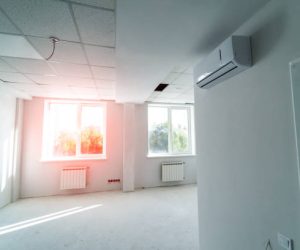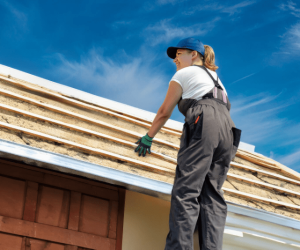Your roof is the first line of defense against the elements, playing a pivotal role in protecting your home from severe weather conditions such as heavy rain, snow, hail, and scorching sun. Weatherproofing your roof is not just an investment in your property; it’s a proactive measure to ensure the safety and comfort of your home.
In this guide, we’ll walk you through six essential tips to fortify your roof, ensuring it remains in peak condition to withstand whatever Mother Nature throws its way. From routine maintenance to selecting the right materials, these strategies are designed to extend the lifespan of your roof and safeguard your home against potential damage.

Regular Inspections
Conducting regular roof inspections is crucial for identifying potential issues before they escalate into major problems. Experts recommend inspecting your roof at least twice a year — in the spring and fall. Look for signs of wear and tear such as broken or missing shingles, cracked flashing, or blocked gutters.
Early detection and repair of these minor issues can prevent costly repairs and extend the lifespan of your roof. If you live in Indiana, for example, you can look up roofers in Indianapolis to schedule a reliable inspection. Be sure to hire a reputable roofing contractor who can provide you with a detailed report of your roof’s condition and recommend any necessary repairs or maintenance.
Clean Gutters and Downspouts
Clogged gutters and downspouts can lead to water backing up and damaging your roof, walls, and foundation. Ensure that your gutters are cleaned at least twice a year to remove leaves, twigs, and other debris. Properly functioning gutters and downspouts direct water away from your home, preventing leaks, water damage, and potential foundation issues.
In addition to regular cleaning, consider installing gutter guards or screens to prevent debris from accumulating and clogging your gutters. These can be particularly helpful if you have overhanging trees near your roof. With flat roofs, ensure that they are also free of debris and have proper drainage to prevent pooling water. Keep in mind that poorly maintained gutters and downspouts can also attract pests and rodents, causing additional damage to your home.
Trim Overhanging Branches
Trees can add beauty and shade to your property, but overhanging branches pose a risk to your roof. During storms or windy conditions, branches can break and fall, damaging your shingles and creating entry points for water. Regularly trimming branches that hang over your roof will minimize this risk and protect your home from potential damage. It’s best to hire a professional tree trimming service to ensure the branches are safely removed and your roofing materials are not damaged in the process.
Ensure Proper Attic Ventilation and Insulation
Proper attic ventilation and insulation are key to preventing a multitude of roofing problems. Proper ventilation helps to regulate temperature and moisture levels in the attic, preventing ice dams in winter and reducing heat buildup in summer. Good insulation, on the other hand, helps maintain your home’s internal temperature, reducing energy costs and preventing thermal stress on your roof.
If you notice attic mold, excessive heat or cold in your home, or higher than usual energy bills, it’s a sign that your attic may not be properly ventilated and insulated. Consult with a roofing professional to determine the best course of action for your specific home.
Select Durable Roofing Materials
When it comes time to replace your roof, selecting materials that are durable and appropriate for your climate can significantly impact its lifespan and performance. Materials like metal roofing, slate, and asphalt shingles have varying degrees of durability, cost, and suitability for different weather conditions. Research and consult with a professional to choose the best material for your home and region.
Additionally, opt for roofing materials with higher wind and impact resistance to withstand severe weather conditions. Investing in high-quality materials now can save you money in the long run by reducing the need for frequent repairs or replacements.
Apply a Waterproof Sealant
Applying a waterproof sealant is an effective way to enhance your roof’s resistance to water damage. This sealant provides an additional layer of protection against rain, snow, and ice, helping to extend the lifespan of your roof. It’s important to select a high-quality sealant and apply it according to the manufacturer’s instructions for the best results.

Weatherproofing your roof is an essential step towards safeguarding your home from the unpredictable forces of nature. By incorporating the six essential tips outlined in this guide—regular inspections, cleaning gutters and downspouts, trimming overhanging branches, ensuring proper attic ventilation and insulation, selecting durable roofing materials, and applying a waterproof sealant—you can significantly extend the life of your roof and enhance its performance against severe weather conditions.
Proactive maintenance and timely repairs not only protect your property but also contribute to the overall safety and comfort of your living environment. Investing in your roof’s health is investing in the peace of mind that comes with knowing your home is well-protected, come rain or shine.



